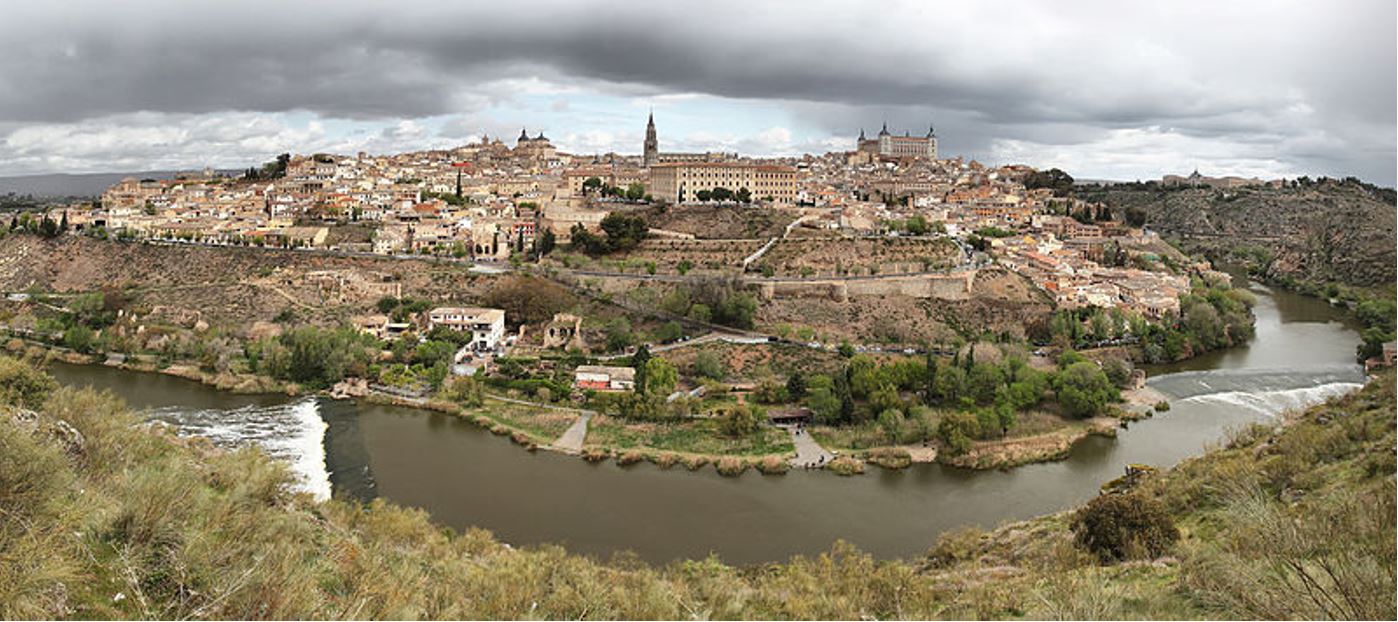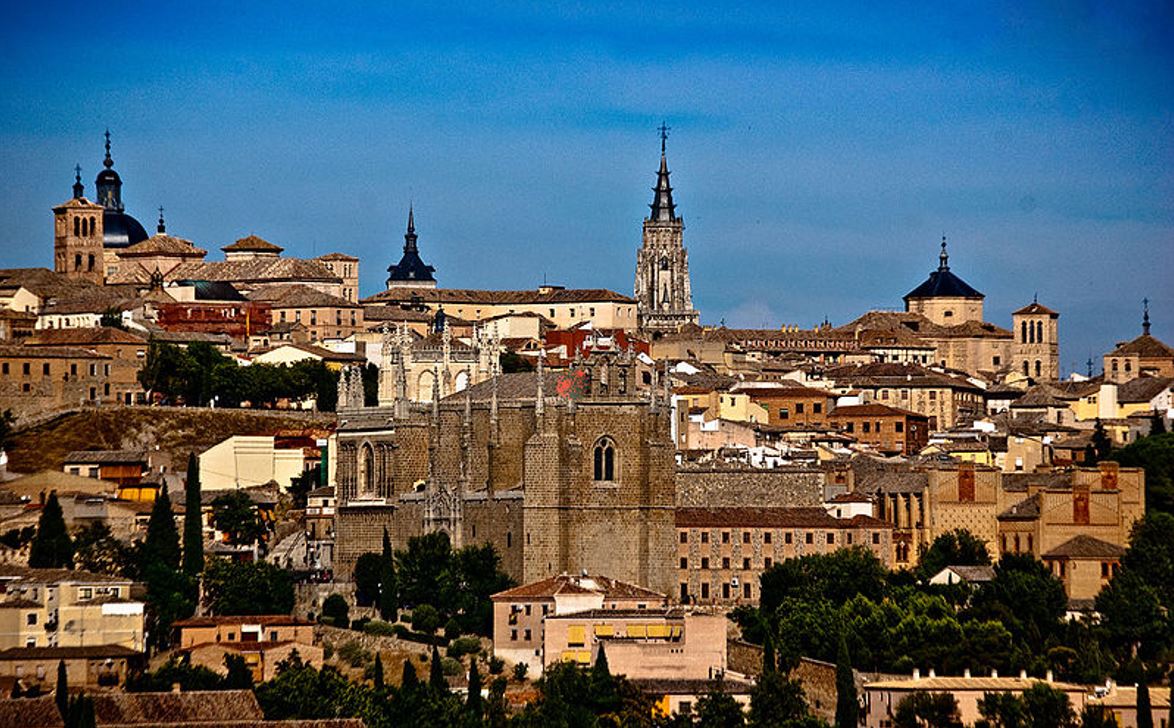Information about Toledo
Toledo is one of the most beautiful cities in Europe that hides in its alleys, like a huge secret, more than 2,000 years of history. It is a city named a World Heritage Site by UNESCO. A place that you need to visit at least once in your life and that makes you fall in love with its history, culture and gastronomy.

Embraced by the meander of the Tagus, its geographical position keeps the causes of its long-standing importance. Man has always found in the Torno del Tajo a place of strategic privilege to settle. High up and surrounded by the natural moat of the river, it leaves no doubt about its defensive and surveillance location. For this reason, some of the important monuments are related to its military structure: the Alcázar, the walls or the Castillo de San Servando…
Toledo has been the home of different peoples who inhabited it, still preserving today important traces that have given it the nickname of City of Three Cultures. It preserves extraordinary testimonies of different civilizations over two millennia. Toledo was successively a Roman municipality, Visigothic capital, formed part of the Emirate of Córdoba, a determining place in the Christian Reconquest and temporary seat of the court during the reign of Carlos V. Its current appearance is due to the superposition of all these influences already the coexistence of three great cultures: Jewish, Islamic and Christian. The city also attracted great artists of universal renown, such as Domenikos Theotokopoulos, El Greco, who lived in Toledo from 1577 until his death.

Of Christian Toledo, its Alcázar, the Cathedral of Santa María, churches, convents and monasteries such as San Juan de los Reyes stand out. From its Arab past, the urban framework of narrow and winding streets and mosques such as the Cristo de la Luz, made of brick and masonry, interlocking arches and wooden ceilings, have been preserved. The Jewish presence can be traced in the El Tránsito and Santa María la Blanca Synagogues.
Sources:
- https://turismo.toledo.es/.
- http://www.turismocastillalamancha.es/patrimonio/toledo-88031/descripcion/.
- https://www.culturaydeporte.gob.es/cultura/areas/patrimonio/mc/patrimoniomundial/bienes-declarados/por-ano-de-inscripcion/1986/toledo.html.
Rights of use images:
- https://commons.wikimedia.org/wiki/File:Toledo_de_la_Humanidad-_Espa%C3%B1a.jpg.
- https://commons.wikimedia.org/wiki/File:View_of_Old_Town_Toledo.jpg.




